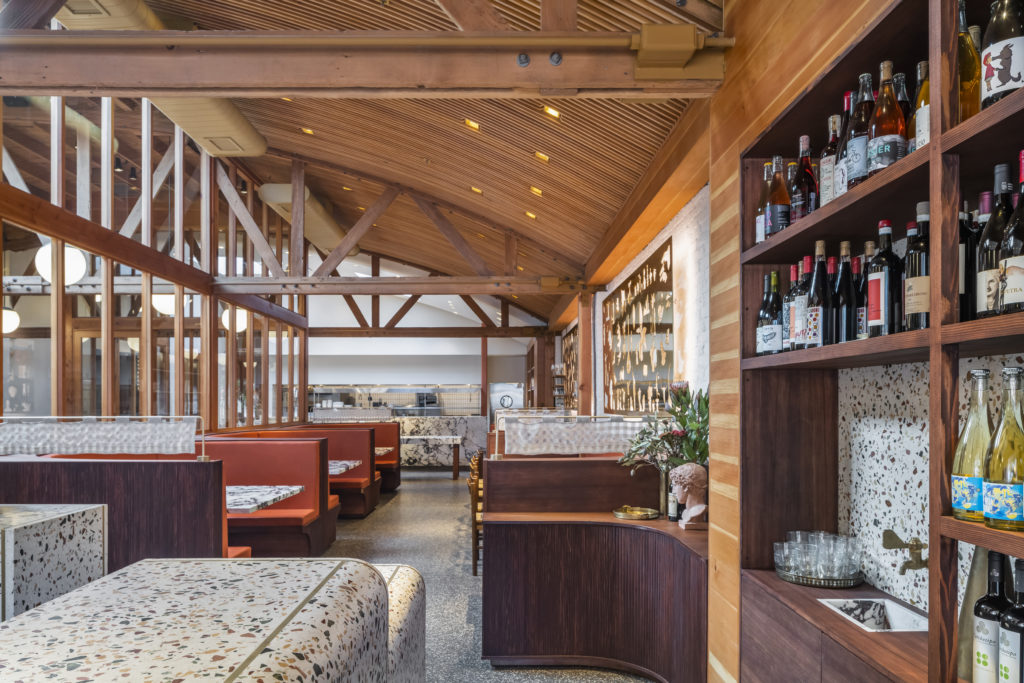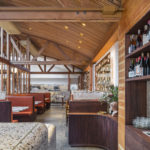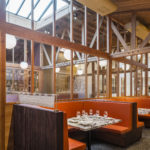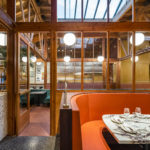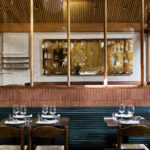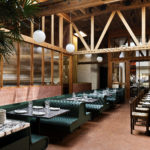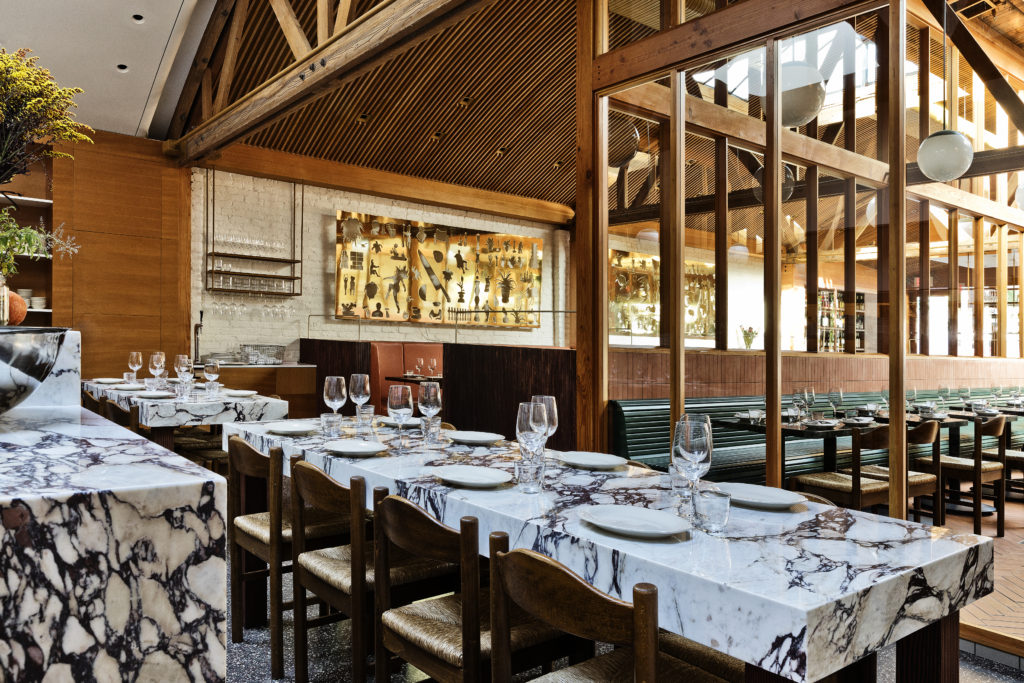There’s No Place Like Rome
Author:Abigail StoneWith Bacetti, owner Jason Goldman, Chef Joel Stovall and architect Christian Stayner of Stayner Architects bring the beauty and food of modern Rome to Echo Park.
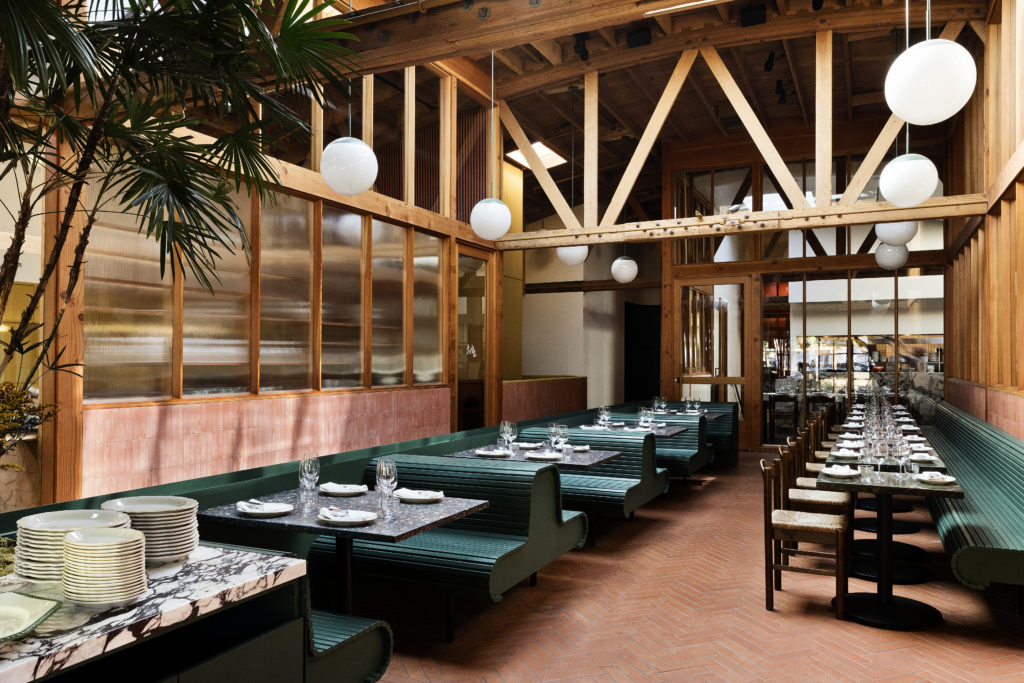
While we’re eager to venture out into the world, the decision is an uneasy proposition; we wonder if, perhaps, we’re throwing caution to the wind. It’s no wonder then that the restaurants we’re drawn to now feel like family reunions, inviting us to share twists on the classics in warmly lit and cozy surroundings. Bacetti, the long-awaited trattoria, from the team behind Tilda, the convivial, mostly stand-up natural wine bar next door that opened just before the pandemic, gets the formula just right.
While Tilda relied on the bar tradition of Spain—where small plates are paired with light alcoholic beverages and wine and eaten standing up—for its inspiration, here the duo, owner Jason Goldman and his partner and architect Christian Stayner of Echo-Park based Stayner Architects, look to Rome, and the welcoming atmosphere of its trattorias, which ensconce diners in comfortable, sensual spaces, for their muse. “Roman cuisine is typified by the quinto quarto (“fifth quarter”), an attitude towards using the full animal and not letting anything go to waste, “ says Stayner. That ethos threads through the design as well as the food, from the use of terrazzo, which traditionally reuses waste marble fragments, to the reimagining of the existing dark structure into something light and airy, to the elevation of simple, humble materials via the deftness with which they’re handled here.
“Much as you might find in Rome, the interiors are a combination of materials, textures, and details from various eras,” Stayner explains, “The terrazzo and streamlined espresso machine are straight out of Rome in the 60s, but coexist with rough-hewn lumber and exposed brick from the 20s, and with old-fashioned plates and table settings.”
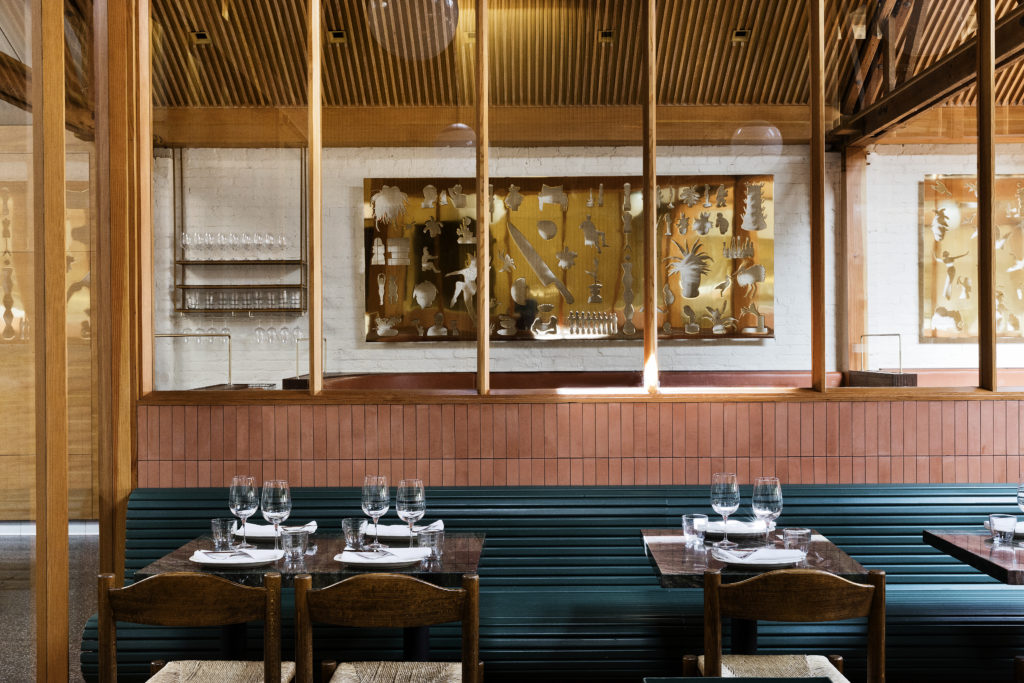
The sensual smorgasbord of color and finishes—forest green wood-slatted benches; vintage Scandinavian worn wooden chairs with woven rush seats; curved orange leather booths; Ketra lighting; wood-framed glass windows that lightly separate the two dining spaces; calacatta viola marble slabs with exuberant veining sourced from the Apuian Alps; and terrazzo floors that mix white marble from California’s Inyo Mountains with green aggregate from the Valle d’Aosta in northwest Italy—shrink the cavernous brick and bow-truss 1928-era space down to something intimate that promotes lingering over a meal. An original large-scale artwork by LA-based artist and photographer Matt Lipps, consisting of two backlit copper panels which sprawl across the restaurant’s far wall, act almost like windows; its dozens of silhouettes from the artist’s vast archive of found imagery, conjure up the blur of a busy cityscape.
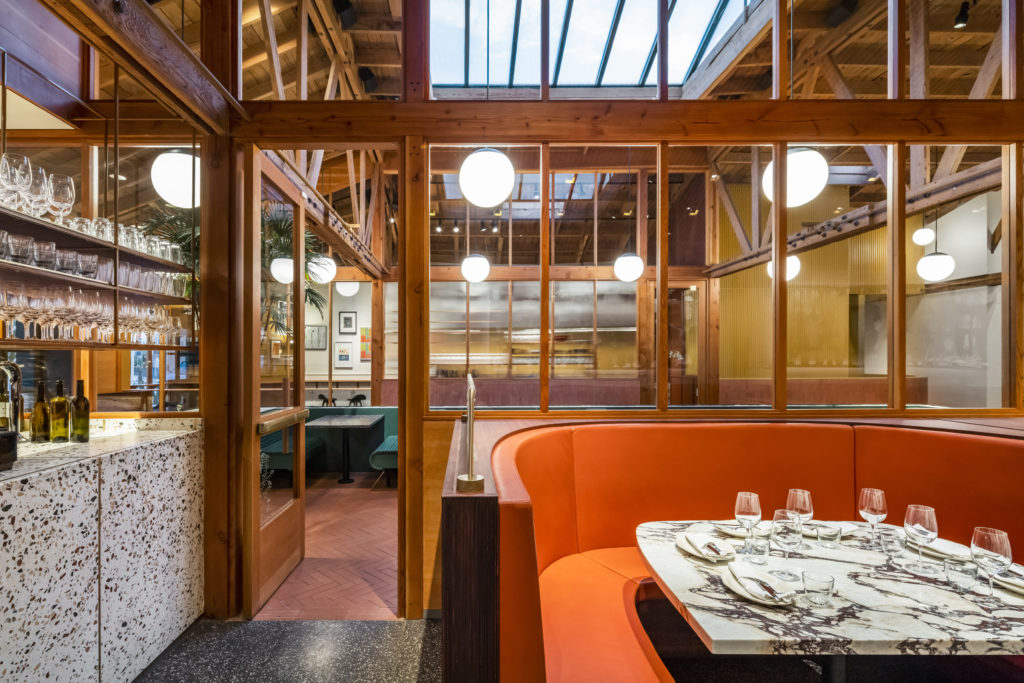
At the back of the restaurant, a thick marble counter, its presence emphasized by two long matching tables, underlines the location of the kitchen. Unlike the kitchens of the past however, with their emphasis on entertainment, the vibe here tips effort rather than theatrics. “We set out to make the labor that is normally invisible to the diner something that is visible and celebrated,” Stayner notes, “The idea was to produce a kitchen that is part of the dining space and the experience, to make transparent the work that goes into making the meal and the experience.” Chef Joel Stovall loves cooking here. “He said that he enjoyed coming to work because he felt happy working in the space and environment we had created,” says Stayner.
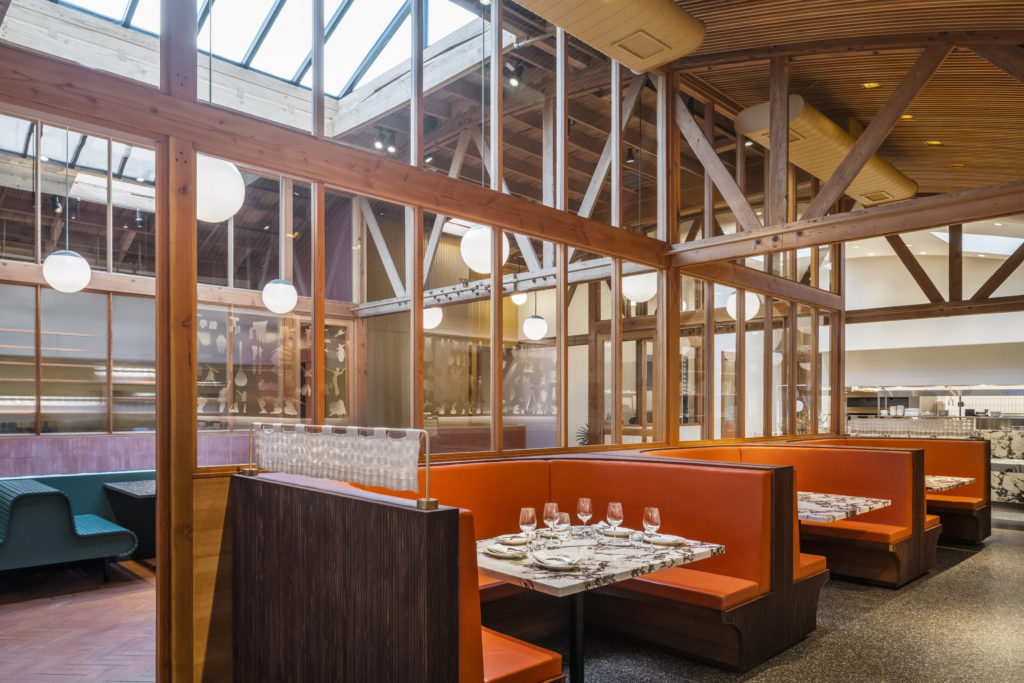
That joy is apparent in the food Stovall sends out: it includes perfectly al dente pastas; Focaccia Ebraica, a spiral of bread studded with olives, currants and rosemary; Suppli Verdi, crispy chewy rice fritters; Girasole, a not-to-be missed salad with a foundation of sunchokes; and, Agnello, an extravagant, braised lamb shank. “Bacetti is a love letter to Rome, written from LA,” says Stovall, “We wanted to honor classic Roman dishes while infusing them with a California sensibility and allowing them to evolve and break the mold from time to time.” The result—in both food and space—is worth venturing out for.
